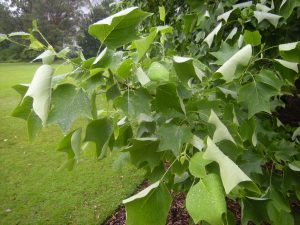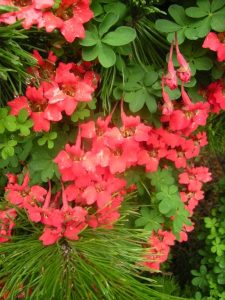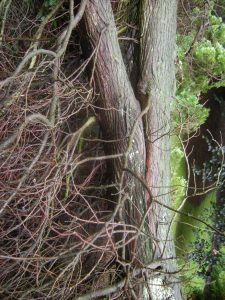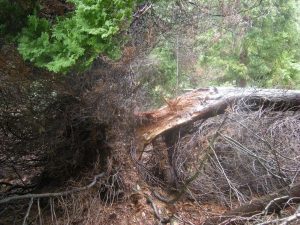Much needed rain fell during the past week. After a prolonged dry period the soil bakes and ideally gentle rain is needed to allow rainwater to absorb into the surface. Torrential rain fell through the nights and days last week resulting in run off and silt slicks draining from rivulet tracks in the soil. Three consecutive days of rainfall in double figures from the 13th to 15th July giving a combine total of 45mm. It does not sound a lot but the ferocity of the downpours makes it seem worse.
With the heavy rain comes damage; weaknesses in mature trees cause limbs to fail under load from the increased weight of water the joints and branch unions are expected to bear.
The image shows failure of a double leader on a Chamaecyparis pisifera ‘Plumosa’. The joint was fundamentally weak due to the infolded bark. As girth increased the expanding growth put opposing strain on each leader. With the added weight of rainwater held within the canopy a definite split occurred.
Deciduous trees with larger leaves, in this case Liriodendron tulipifera, gain added interest following storms as their foliage twists revealing colour contrast between upper and lower surfaces.
Hanging on through this spell of poor summer weather is the climbing “Chilean Flame Flower”, Tropaeolum speciosum. As usual making a welcome splash of colour attached to mature woody plants.
As you walk about the city appreciate the heavy scent from the creamy white flower panicles of hedging “Privet”, Ligustrum ovalifolium, or L.vulgare made more noticeable with the warm humid atmosphere.




